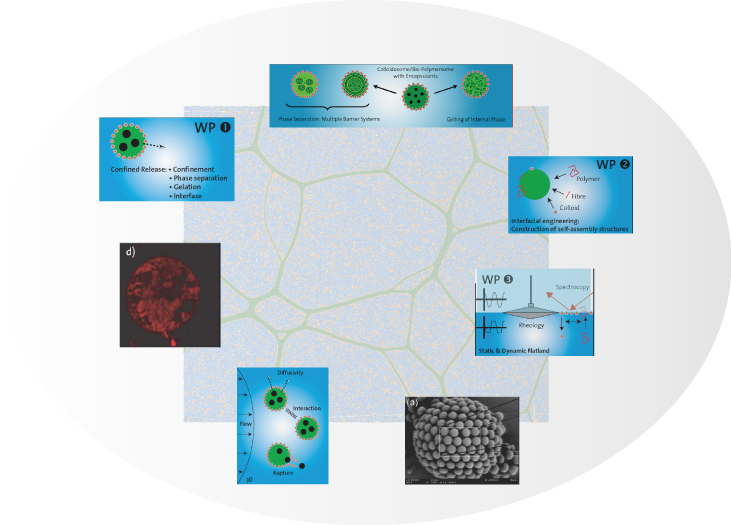
New controlled release systems produced by self-assembly of biopolymers and colloidal particles at fluid-fluid interfaces
| In the present study the transient morphological evolution of surfactant aggregates of dilute dimer acid betaine solutions was investigated by light scattering techniques and surface tension measurements. It is shown that dinner acid betaine solutions undergo a spontaneous formation of larger thermodynamically stable vesicles within the time period of several days via intermediate aggregation states. The vesicular structures can be destroyed by dilution but will reversibly rebuild with the same time constants indicating a true equilibrium situation similar. In contrast to other vesicle-forming surfactant systems, dimer acid betaines exhibit aggregation mechanism that are similar to those of two-component surfactant mixtures, as it has both dimeric and zwitterionic properties promoting vesicle formation. (C) 2008 Elsevier B.V. All rights reserved. [hide]
Scientific Board
Scientific Stuff
Associated Scientists |

|
Enjoy your reading
SY Tee, AR Bausch, PA Janmey, | |
Selected conferences (co-)organized by project members8th World Congress on Computational Mechanics WCCM8 200830 June - 5 July 2007, Venice, Italy ► |
14 May 2025
![]() mk
mk